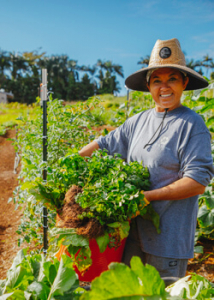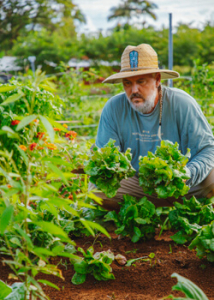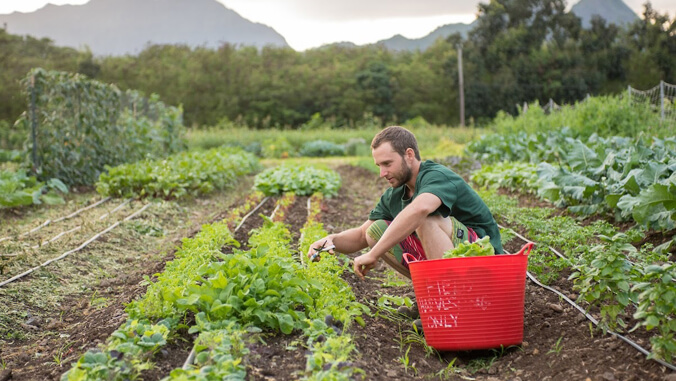The future of Hawaiʻi’s agriculture, which is vital to the state’s local food supply and economic health, hinges on the next generation of farmers. To support beginning and small farmers, American AgCredit and CoBank increased their investment in the University of Hawaiʻi at Mānoa, College of Tropical Agriculture and Human Resources (CTAHR) farmer training program, GoFarm Hawaiʻi. The $1 million gift establishes a matching grant program that will help GoFarm Hawaiʻi graduates grow their agricultural businesses, which enhances food security, provides local fresh food and supports economic growth in the islands.

“Agricultural production in Hawaiʻi is concentrated on smaller farms, and more than a third of Hawaiʻi’s farmers have less than 10 years of experience,” said CTAHR Dean Nicholas Comerford. “Supporting these young, beginning and small farmers is important to help alleviate Hawaiʻi’s reliance on imported food, which restricts access to fresh food and makes our island state especially vulnerable to disruptions in food supply. This grant enables our GoFarm Hawaiʻi graduates to build farming businesses that benefit all of us here in Hawaiʻi.”
Today, GoFarm Hawaiʻi stands as one of the largest and most successful farmer development programs in the nation, graduating 480 participants since its inception in 2013. The program provides young, beginning and small farmers with business technical assistance, educational opportunities and access to a suite of resources designed to remove barriers to farming and agribusinesses.
“The new grant directly supports GoFarm Hawaiʻi program graduates, who are now local farmers,” said GoFarm Hawaiʻi Director Janel Yamamoto. “It equips these farmers with the knowledge, experience and confidence to build and grow their farm—and contribute to Hawaiʻi’s food security and economic growth.”

The grant, which must be personally matched by the farmer, provides up to $25,000 per applicant, which may be used to finance a land purchase, operating expenses or equipment. The farmer match may consist of cash, a bank loan or a combination of both.
“We focus on support for young, beginning and small farmers and ranchers as a critical part of our cooperative’s mission,” said Fred Dixon, regional banking executive for American AgCredit’s coastal region. “In our experience, to be successful these farmers need capital to get started, and they need resources like business training and support. We’re pleased to partner with GoFarm Hawaiʻi to provide the foundation that young, beginning and small farmers need—in terms of capital and skills—to kickstart their future, and agriculture in Hawaiʻi.”
“CoBank is delighted to expand on our partnership with American AgCredit and GoFarm Hawaiʻi to support a new generation of agriculture in Hawaiʻi,” said Brenda Frank, executive vice president of CoBank’s Farm Credit Banking Group. “The GoFarm Hawaiʻi program creates opportunities for entry and strong pathways toward success for young, beginning and small producers, which in turn strengthens local agriculture and food access throughout the state.”
This grant rounds out American AgCredit and CoBank’s $3 million commitment to invest in food security in the islands and support young, beginning and small farmers new to the agriculture space.
- Related UH News story: $2M gift to develop local farmers, food supply, January 31, 2021
“It is truly inspiring to see partners such as American AgCredit and CoBank step in with their generous donations to address critical issues like Hawaiʻi’s food security and local economy,” said Tim Dolan, UH Foundation CEO and UH vice president of advancement. “We are grateful for their investment in Hawaiʻi’s next generation of farmers.”
This effort is an example of UH Mānoa’s goal of Building a Sustainable and Resilient Campus Environment: Within the Global Sustainability and Climate Resilience Movement (PDF), one of four goals identified in the 2015–25 Strategic Plan (PDF), updated in December 2020.


